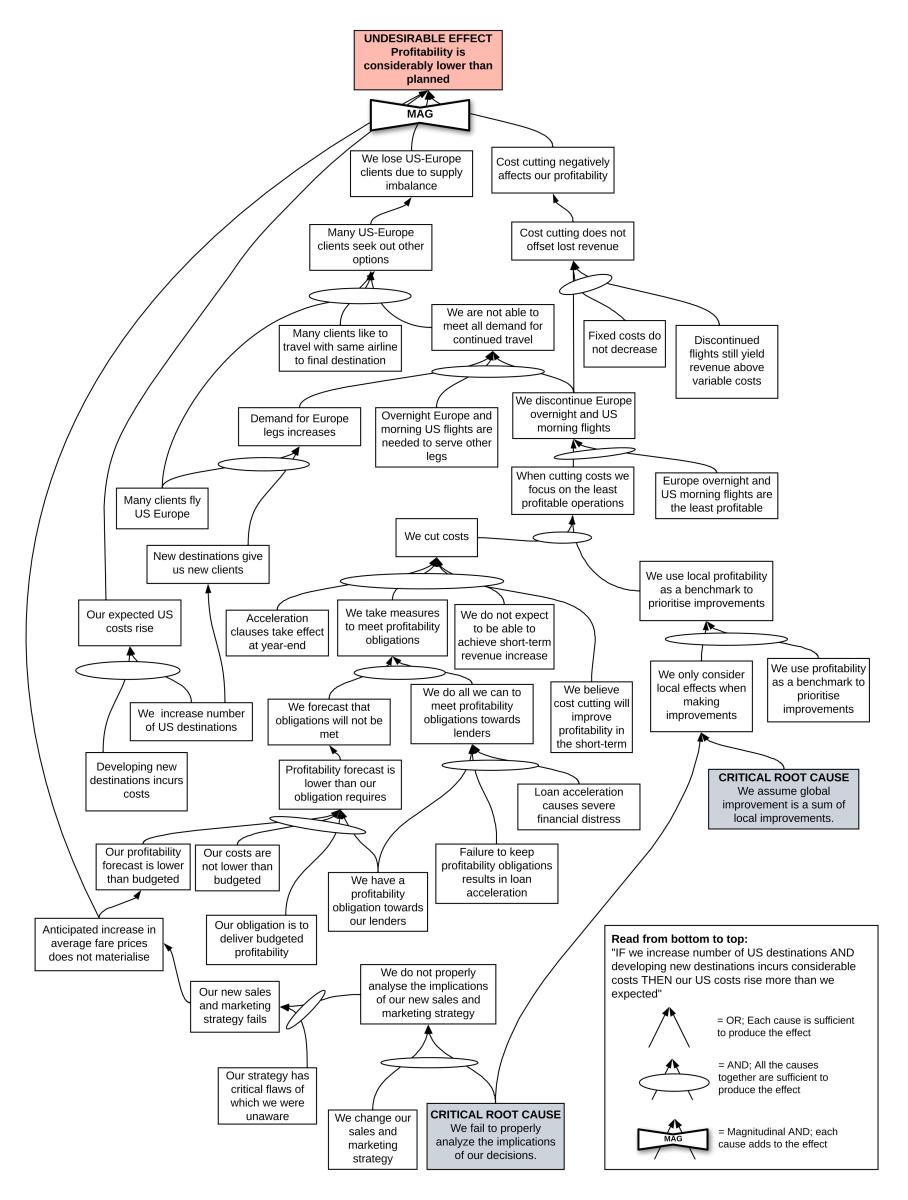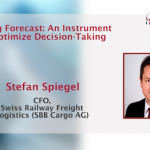The CFO at Swiss Railway Freight Logistics (SBB Cargo AG) shares how his own company successfully...

The true purpose of FP&A is to facilitate great decision-making. This is why we gather and analyse data, prepare reports, and design and maintain planning and budgeting processes.
But in a world increasingly characterised by volatility, uncertainty, complexity, and ambiguity (VUCA), we need more than the traditional toolbox. On top of it, we need the ability to precisely predict the effect of our decisions based on a systemic view of the company, considering the often complicated, even complex, interactions between events. The critical tool for this is visual, logical analysis.
August 2018 - Icelandair CEO Steps Down
On August 27th 2018, the CEO of Icelandair announced his resignation following the publication of a low forecast for 2018 earnings. The reason given was the failure of a new marketing and sales policy in 2017, as well as route changes which led to an “imbalance between the distribution of flights to Europe on the one hand and North America on the other.“
According to a former top executive, in 2017, the company decided to close all sales offices and let all regional managers go. The reason for this was streamlining operations through digital transformation, but the implementation failed. They also added a light economy class to upsell to the standard economy, but the faulty pricing structure made the new inexpensive class far more popular than expected. Both those changes thus resulted in lower-than-expected revenues. Simultaneously, the company added new US legs and, at the same time, decided to discontinue overnight Europe flights and morning US flights, as those flights were deemed to be the least profitable. There was also a requirement to focus on more profitable operations. Management hoped increased demand for the remaining flights would offset lost revenue from those discontinued, which it didn’t do. As the business model of Icelandair is a hub and spoke model, with the Keflavik airport in Iceland as the hub, maintaining balance in leg capacity is crucial.
In a statement, the CEO explained he felt he had to take responsibility for not making sure the changes in the company were carried out well enough and the problems they led to solved quickly enough.
The Roots of the Problem
The cause-effect diagram below shows an analysis of the situation. The tool used here is a Current Reality Tree, a logical cause-effect analysis tool that is a part of the Logical Thinking Process methodology. We find two critical root causes behind Icelandair’s problems. The first is hinted at by management’s policy of prioritising legs based on their profitability. In a hub and spoke model, each leg’s profitability is irrelevant. Instead, decisions must be based on consideration for the whole system around the hub. In short, what we have here is likely to be a classic example of how a flawed paradigm can adversely affect decision-making: In this case, it looks very likely that management erred by considering only the local, not the global, optima, while another reason, lack of analysis before a decision is made, may also be at play. Lack of analysis is also behind the failure of the new sales and marketing strategy. At the same time, loans with acceleration clauses tied to profitability probably didn’t help management keep a cool head when reacting to the problems. Still, those are not the root cause anyway, as the above decisions were independent of those agreements.

Figure 1: Icelandair 2018 - Current Reality Tree
Why Do We Make Wrong Decisions?
There are six possible causes why we make wrong decisions. What the first three have in common is that we cannot avoid them.
- An unexpected event may occur after the decision is made, invalidating the rationale behind it.
- Some critical information may be lacking, or we may believe it is.
- We may believe the situation is so complex that it cannot be properly analysed.
- This one is rare, but it is important to be aware of it; this is when we knowingly make a wrong decision. There may be two reasons for this:
- either we have a conflict, interpersonal or between a person and the company,
- or a trade-off may be at play.
But the final two causes explain the vast majority of wrong decisions, and it is in our power to deal with them. Those are,
5. on the first hand, lack of rigorous analysis of the consequences of the decision,
6. and, on the other hand, one or more flawed paradigms, which we do not question.
Visual analysis, based on strict rules of logic, is extremely valuable when we are tasked with figuring out why a wrong decision was made. The diagram shows an example of how we can go about it. But it is even more essential to perform logical analysis before we make a decision. The appropriate analysis tool here is the Future Reality Tree, which helps us to determine the chain of events initiated by a decision using rigorous logic. That way, we can verify, first, if it is likely to lead to the desired outcome and, second, if it may have any unanticipated negative consequences and how those may be dealt with. The visual nature of the Future Reality Tree enables us to do this even for the most complicated chain of events without losing ourselves in detail. This way, we considerably reduce the likelihood of ending up in a situation like the CEO of Icelandair did in August 2018.
The task of the FP&A expert is to help management make the right decisions. This calls for understanding the company’s inner workings as a complex system. We must avoid allowing boundaries between divisions or profit centres to blur our vision of the whole. To achieve such understanding, the expert must be able to perform a rigorous logical analysis of the consequences of the decision. This is why an FP&A specialist trained and experienced in visual cause-effect analysis can really stand out from the crowd.
----------
Thorsteinn Siglausson is the Author of "From Symptoms to Causes – Applying the Logical Thinking Process to an Everyday Problem"
Subscribe to
FP&A Trends Digest

We will regularly update you on the latest trends and developments in FP&A. Take the opportunity to have articles written by finance thought leaders delivered directly to your inbox; watch compelling webinars; connect with like-minded professionals; and become a part of our global community.




